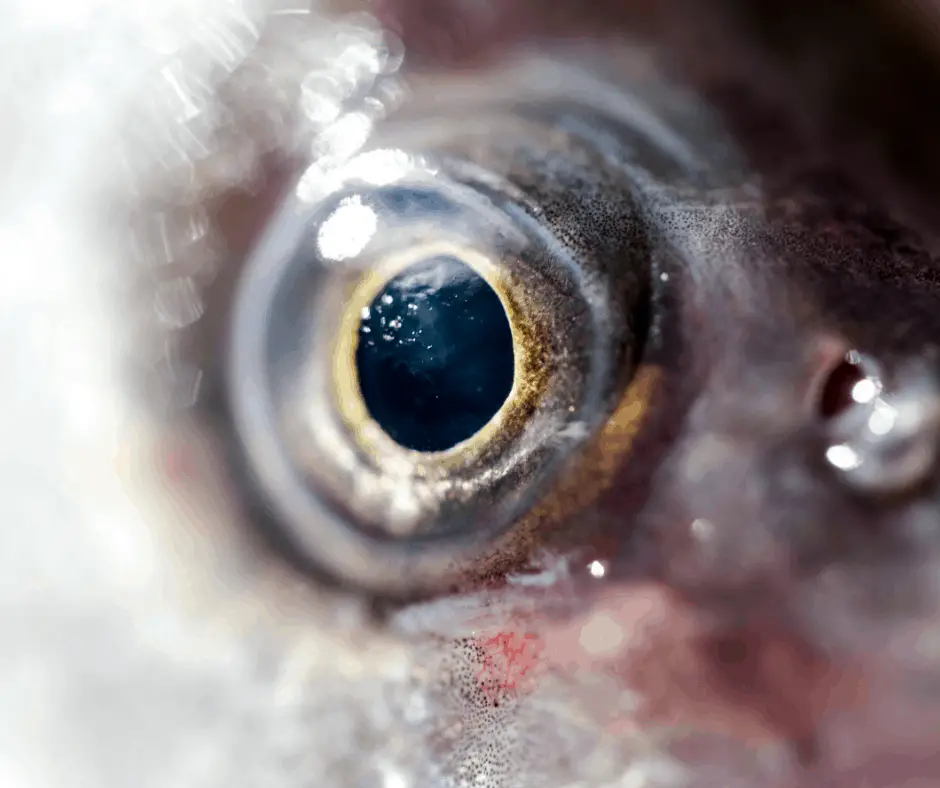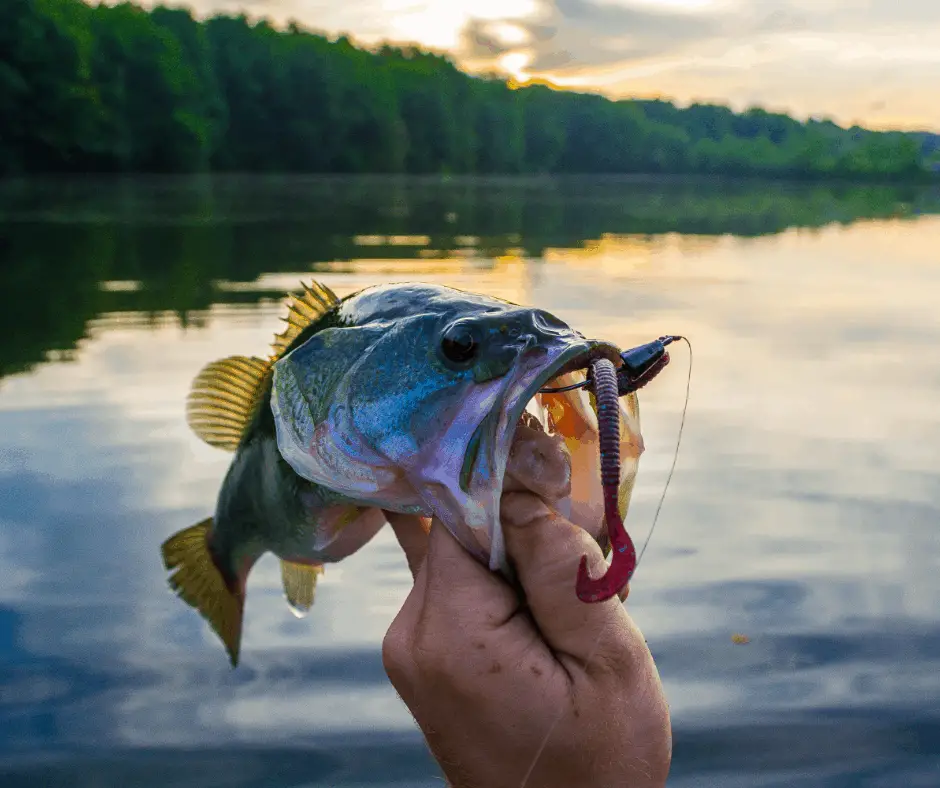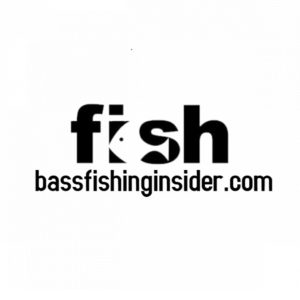
Think bass are blind after dark? Not even close. Their night vision changes how they hunt, and if you’re not adjusting your approach you’re leaving fish behind.
Bass fishing takes a certain skill. Add to this the cover of night, and the odds may seem stacked against you. Read below to ease your anxiety and increase your odds of catching more bass at night.
Bass have surprisingly impressive sight and can see at night thanks to unique physiological characteristics. Their nighttime vision is stronger when ambient light is present, or water clarity is high. The construct of their eyes makes bass successful hunters at night.
Yes, bass can see at night, but how do outside stimuli affect them when they are in their nighttime habitat, and you are out for a night of fishing fun? Read on to learn more about how a bass’ sight can work in your favor and how it can work against you if you are not prepared.
Factors That Affect How A Bass Sees At Night
- The Eyes and Brain
- Bass eyes consist of a relatively substantial ocular lobe. According to Chris Horton, the size of the ocular lobe in bass indicates that the brain invests “much of its neurological resources in its ability to see” (source).
- The construct of the eyes and the brain’s dedication to sight make bass successful hunters at night, one of their favorite times to feed.
- The Lighting
- More light means bass can see sharper images from further away. As they swim deeper, the quality of their sight diminishes.
- With increased light, bass can see color instead of just shadows and movement, making lure selection more critical.
- While a new moon will not provide much light, a full moon can illuminate the water nicely for bass to see better.
- Artificial lighting from the boat or a nearby dock can help bass to see; however, their sight is limited, directional, and can be blocked depending on the angle of light penetration.
- The Water
- During or after rain, the water can become cloudy or muddy. If the weather is inclement before or when you cast off, know that bass cannot see as well to find prey.
- In cloudy water, switching to a lure that contrasts with the surroundings will improve the bass’ ability to see it, especially in the darker surroundings of night.
- Whether the water is clear or cloudy, bass seek food at night. So make sure you have the right gear on hand regardless of water conditions to increase your odds of a successful outing.
Eyesight Makes Bass A Top Predator

Understanding Bass Vision
- Their large eyes protrude, leaving only two blind spots directly below and behind. Having no eyelids helps to maximize the bass’ use of sight. Since bass feed primarily by sight, this is arguably their most important sense.
- Their peripheral, distance, and detail discernment are impressive. For example, Bass have 180-degree lateral vision on both sides, can see up to 50 feet away in clear water, and can distinguish fine detail of an object.
- The positioning of the eyes allows each to have a wide arc of vision. Bass locate prey laterally and then use frontal sight to focus on their mark before striking.
- Bass respond to motion. They can track fast-moving objects and are attracted to erratic movement. Night or day has less significance when we consider this inherent skill.
- Research shows that bass have retinal rods and cones that enable them to see a small range of colors. Although this particular capability decreases at night, it is another attribute that gives bass an advantage in finding food.
- Under the right conditions, bass can see beyond the water’s surface, even at night. If you move quickly or wear reflective clothing, they can get spooked. Be ready when you cast, too, as bass may see the lure coming and react faster than you can.
Want to know which lure colors actually work after dark?
👉 Check out the best colors for night bass fishing.
6 Tips For Bass Fishing At Night
- Pick Your Fishing Spot. Pick a fishing spot with clear water. Clearer is better, but at least 2 to 4 feet of visibility is ideal when fishing for bass at night. Muddy lakes can be the bane of your existence since it is harder for bass to spot bait.
- Anchor Your Fishing Boat. Anchor your boat in a location likely to have a concentration of bass. The best locations feature a hump, gravel bar, rock points, or drop-off. Deep water close to the shore is a good fishing spot. In these areas, the natural food chain is in action. Smaller fish live and eat here, attracting larger fish which attract larger fish, and so on.
- Patience And Fishing Go Hand-In-Hand. The sound of your boat and human activity during daylight hours can keep bass at bay. Once people have departed, the sun goes down, and your boat is situated and quiet, cast your line and wait. Like in the movie “Field of Dreams,” where the players showed up at night, trust that if you fish it, the bass will come.
- Go After The Big Fish. Night is a prime time to fish if you are after the big bass. Night is when they are out and about. Put your big lures in action and avoid catching too many smaller fish because the commotion will alert the big bass roaming nearby.
- Don’t Scare The Bass! Night means less ambient noise. Doing your best to mimic the natural environment will boost your return on your fishing expedition. As stated before, keep still and quiet. Also, minimize lights on your boat, as very bright lights can be alarming to bass. Finally, you don’t want to overwork your bait when fishing for bass at night.
- Have Your Rods Ready To Go. Prepare your rods before you venture out on the water. This complex and frustrating task in the dark will waste precious fishing time. Have several rods baited and ready to go when you leave the dock. As for the inside of the boat, it should be organized and clear of loose items. If cluttered, your boat increases the chance of injury and unnecessary noise.
Nighttime Lures for Bass – 101
There is a wide range of lures for successful nighttime bass fishing. Within this selection, however, we find consistencies among opinions about what lures are best.
Travis Faulkner and Don Wirth prefer “bold and loud lures” for shallow waters (source). A large spinnerbait with a rubber imitation or a “standard jig tipped with a chunk trailer” are their go-to picks. They also suggest that it is prudent to choose your lure color after observing moonlight and cloud cover.
Many night-fishing anglers agree spinnerbaits are best overall, but they have favorites regarding attachments, color, and weight. Some prefer a red pork frog, rubber craw, or spider jigs. Others may reach for a red/purple, or black skirt. Still, others use larger hooks masked at night and heavier baits for deeper water. Rubber worms and lizards can also entice bass with their movement and subsequent vibration. If there is a significant wind, a larger spinnerbait can go further in attracting attention.

Successfully catching bass at night isn’t just about the lure itself. It takes the finesse of a practiced angler to get the job done. The angler must gauge when and how to move the lure. Sometimes, precise movement or vibration is called for, and erratic movement attracts the bass at other times.
Expert fisherman and lure designer Mitch Looper recommends knowing where to use which type of lure (source). With grass or other thick cover, use a spinnerbait which is less likely to get hung up. Jigs will sound the dinner bell for larger bass when fishing among lily pads and the like. Big bass also respond to worms imitating baits near weed lines. If the weeds are very thick, a buzzbait will call bass out.
Careful color selection of your lure is important. Fishery scientist, Ralph Manns, says
“…a black belly against [a] lighter sky shows well. A patch of yellow-green or light blue against a dark background increases the chance of a bass detecting a lure when it’s looking down or outward” (source).
He explains colors that contrast with the surroundings stand out to bass at night.
While many night anglers use black spinnerbaits, some experts report enormous success using baits that are white. One of these experts is Dean Stroman. He says, “White crankbaits and white jig and craw are…a major part of my night arsenal” (source). But don’t be too quick to discount other dark colors when picking lures; Dean also gets good results with dark red, blue, and black.
Looking to catch more bass in any condition?
👉 Don’t miss these 49 tips that always seem to work.
Lighting Your Way To Successful Night Fishing
Lighting plays a significant role when on a bass-fishing excursion after dark. Lighting can be applied for your safety and give a fishing advantage. However, used unwisely, it can be a buzzkill.
Launch your boat from a well-lit dock to avoid an accidental fall before your outing. In addition, dock or shore lighting is a compass for home if you plan to venture far out.
If you plan to fish inland, illumination will attract prey that bass like to hunt, drawing them near your position. Lighted shores can appear to bass as mild daylight, creating areas of “shade” where bass like to feed during the day. An area with consistent lighting attracts prey and, as a result, hungry bass.
Some anglers prefer a full moon over a half moon for fishing conditions. Because the moon-phase argument lacks consistency, moonlight is a consideration for the individual. During an outing, anglers might want more light to help navigate the water and manage rods and bait. Others like less light and swear by the fishing advantage it gives them.
Night bass anglers differ on whether to use lighting at all; how to use lighting is an entirely different consideration. Some believe low to no light is best to keep a low profile.
Rather than rely on the moon or artificial shore lights, crafty anglers install blacklights on their vessel. Blacklight casts a glow similar to moonlight which is non-alarming to the bass. As a result, the bass go about their business oblivious to your presence, and you can see the area around you and what your hands are doing! I’ve seen blacklights for fishing in action, and they are amazing!
Take it a step further and use fluorescent monofilament lines; their glow from the blacklight will show subtle line movement, improving your reaction time in that brief window.
🌕 Moonlight Matters: How Lunar Phases Affect What Bass Can See
Not all nights are created equal. The moon plays a huge role in how well bass can hunt—and how well they can see your bait.
- Full moon: Bass can see better and will roam more, often hitting faster-moving lures. Try topwaters, swimbaits, or spinnerbaits in black, blue, or dark red.
- New moon or overcast: It’s almost pitch-black underwater. This is when you want slow, thumping baits like a black/blue jig or a Texas-rigged worm with added scent or sound. Here’s one of my favorites for nighttime bass fishing.
- Moonrise and moonset: These are underrated bite windows. Fish often get more active right as the moon breaks the horizon. Z-Man Chatterbait (Amazon).
💡 Night planning tip: Check the moon phase before heading out. Fish differently on a glowing lake vs a dead-dark one—your lure’s visibility changes with the sky.
Throwing heavier lures at night?
👉 Here’s the best baitcaster baits—and what to avoid.
The Bass Bottom Line
Get out there and do some night fishing! The bass will show up, so you might as well engage them in a game of nighttime chess. Start by strategically choosing your location, lighting, and lures. Then, toss in your line and git ‘er done. Oh, and be sure to arrange for the next day off; great night fishing means no sleep!
Affiliate Disclosure:
Some of the links in this post may be affiliate links. If you make a purchase through them, we may earn a small commission at no extra cost to you.
